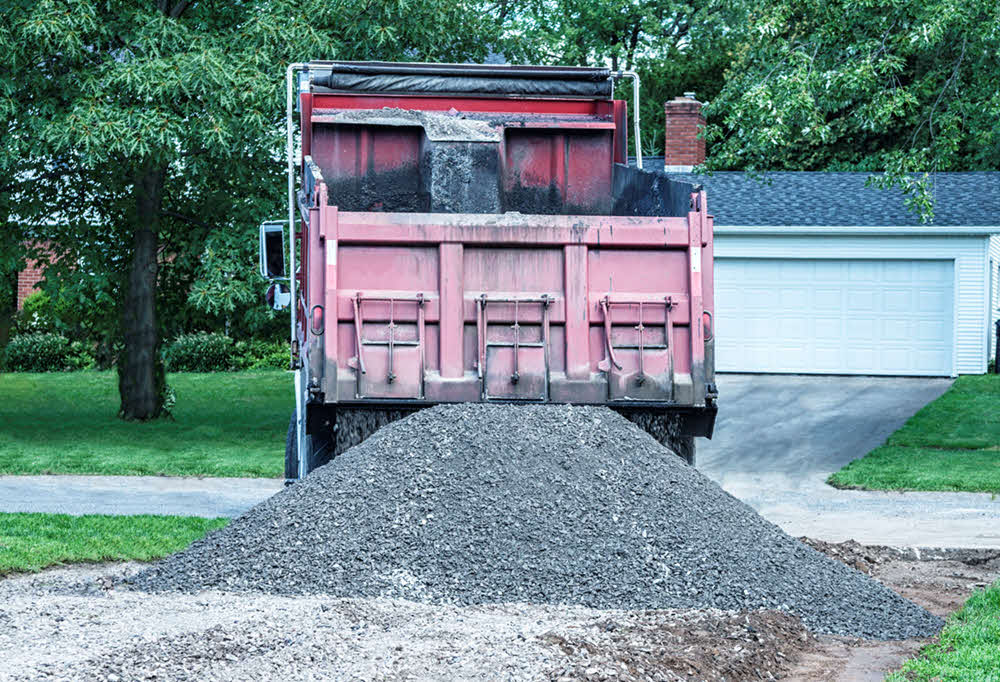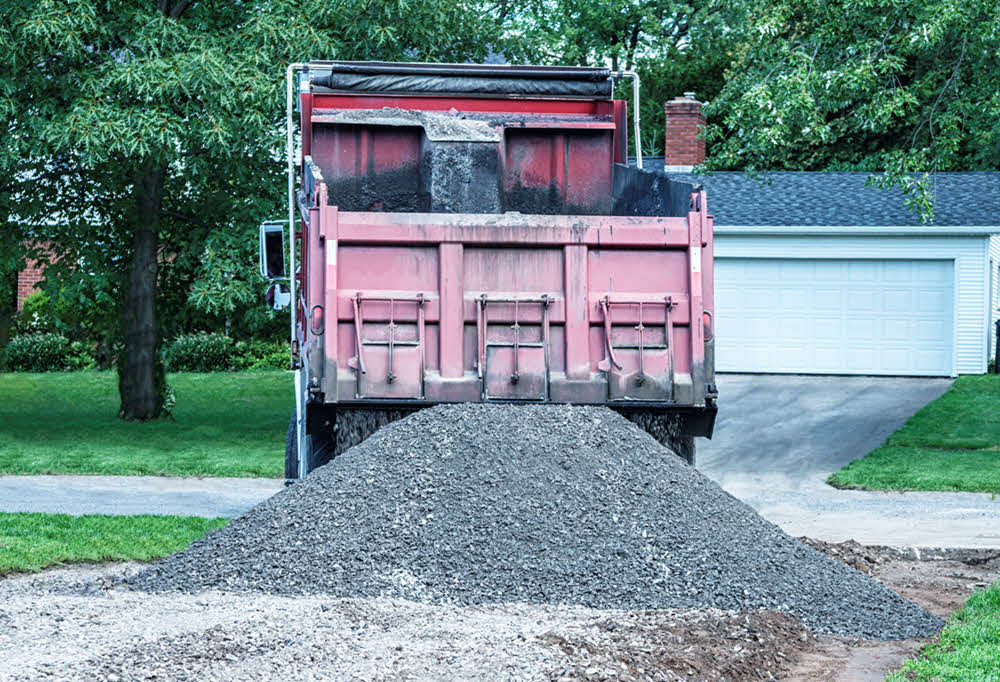Heavy Hauling Truckingin Romeo MI
Heavy Hauling Expertise for Your Largest Transport Needs
We Are Locally Owned & Operated For Over 37 Years
Contact Us Today!
We Serve Businesses In And Around The Following Cities:
About Heavy Hauling Trucking
The Comprehensive Guide to Trucking in Romeo for Commercial Properties
Trucking is an indispensable component of commercial operations in any city and Romeo is no exception. As firms in this Michigan city continue to evolve, expand, and diversify. Their need for reliable and efficient trucking services thus inevitably escalates. Particularly when it comes to construction, renovation, demolition, and waste management tasks. This comprehensive guide will offer you insights on the benefits, process, and real-world applications of trucking in Romeo.
Material Hauling: A Primordial Need
Whether you’re renovating an office building, constructing a store, or demolishing a derelict property, trucking services such as material hauling are essential. From soil and scrap wood to bulk cement, construction debris hauling services provide the critical link from excavation sites, construction yards, and other sources to the project site. Skilled operators like D&J Contracting can handle the haul your own concrete task efficiently, with precision, and within schedule, thus minimizing project delays and additional costs.
Landscaping and Yard Cleanup
Not all trucking services in Romeo just focus on construction and demolition. Many commercial properties constantly require backyard debris removal, haul away landscaping, and lawn debris removal. The verdant look of your commercial property says a lot about your business. Regular maintenance can generate a significant volume of leaves, scrap wood, and tree debris. Securing reliable construction haul truck services capable of efficiently hauling away yard waste can significantly streamline your property’s upkeep.
Clearing Demolition Debris
Romeo has a well-documented history, and its commercial properties reflect this heritage. However, structures age and sometimes a demolition is required to make way for modern, more efficient buildings. Demolition haul away is a key aspect of this process with proper haul waste services ensuring the old materials are efficiently removed for safe disposal or recycling. Entities such as D&J Contracting possess the necessary skill-set to adequately haul away tree debris and other related materials.
Bulk Cement Hauling
Bulk cement hauling is another crucial service that D&J Contracting has repeatedly proven its prowess in. Cement is a principal material in any construction task, and its safe and timely delivery is imperative. Trucks are equipped with specialized equipment designed for optimum transportation of cement over large distances. This ensures a consistent supply chain, making certain construction activities are not stalled due to cement shortage.
The Environmental and Financial Benefits of Efficient Trucking
Economically, efficient trucking can save businesses a significant fraction of potential losses that could be incurred through delays, damages, or mismanagement. In environmental terms, cutting-edge trucking equipment and waste disposal strategies significantly reduce hazardous emissions and promote the recycling of waste materials. D&J Contracting is one such firm that consistently prioritizes such environmentally friendly principles, thereby cementing its name in Romeo’s commercial trucking sector.
In conclusion, trucking services for commercial properties are keystones in the broader construction landscape in the city of Romeo. The variety of services from debris removal to bulk supply delivery, the professional handling of tasks to environmental preservation, to list out a few, underscores the value of a trustworthy trucking partner for your commercial property. Thus, maintaining a strong, collaborative relationship with a reputed service provider like D&J Contracting is not just a good business practice, but a strategic move that can significantly impact your business’s bottom line.
Heavy Hauling Trucking Gallery


Call Us Today to receive your Free Quote for
Trucking in Romeo
Serving: Romeo, Michigan

About Romeo, Michigan
A settlement here was originally occupied by the indigenous Chippewa (Ojibwe), an Algonquian-speaking people who were part of a large language family of tribes extending to the Atlantic Coast. Those tribes around the Great Lakes are thought to have migrated to this area by the 12th century.
The early European-American settlers in this area referred to the Chippewa settlement as “Indian Village”. In the 1820s and 1830s more migrant European-American families began to settle in the area, building homes and establishing businesses. They renamed the community “Hoxie’s Settlement”, after a man who opened an inn on Main Street. In 1839, Hoxie’s Settlement became incorporated and was renamed as the village of Romeo. The name was suggested by the wife of local merchant Nathaniel Taylor because it was “short, musical, classical and uncommon.” Romeo celebrated its 175th anniversary on March 9, 2013.
Romeo once served as a trading center for the timber industry, and had many mills processing lumber from the region. Many wealthy timber families resided there. Dozens of stately Victorian mansions survive. Romeo is distinct in the area for having a fairly robust, traditional downtown, which has never suffered a major fire. Because of this, some stores and restaurants downtown have features such as original tin ceilings from the Civil War. In the early 20th century, Romeo was the site of an early business devoted to the new automobile industry: the Detroit Auto Vehicle Company operated here from 1904 until 1908.
The village is in northwestern Macomb County, situated at the southeast corner of Bruce Township, with a portion extending south into Washington Township. Armada Township is adjacent to the east and Ray Township to the southeast. M-53 passes through the east side of the village, leading north 16 miles (26 km) to Imlay City and south 30 miles (48 km) to the eastern side of Detroit.
According to the United States Census Bureau, the village of Romeo has a total area of 2.05 square miles (5.31 km), of which 0.002 square miles (0.005 km), or 0.10%, are water. East Pond Creek crosses the easternmost part of the village, flowing east to the North Branch of the Clinton River, part of the Lake St. Clair watershed.
| Census | Pop. | Note | %± |
|---|---|---|---|
| 1850 | 330 | — | |
| 1880 | 1,629 | — | |
| 1890 | 1,637 | 0.5% | |
| 1900 | 1,580 | −3.5% | |
| 1910 | 1,787 | 13.1% | |
| 1920 | 2,102 | 17.6% | |
| 1930 | 2,283 | 8.6% | |
| 1940 | 2,627 | 15.1% | |
| 1950 | 2,985 | 13.6% | |
| 1960 | 3,327 | 11.5% | |
| 1970 | 4,012 | 20.6% | |
| 1980 | 3,509 | −12.5% | |
| 1990 | 3,520 | 0.3% | |
| 2000 | 3,721 | 5.7% | |
| 2010 | 3,596 | −3.4% | |
| 2020 | 3,767 | 4.8% | |
| U.S. Decennial Census | |||
As of the census of 2010, there were 3,596 people, 1,501 households, and 979 families residing in the village. The population density was 1,780.2 inhabitants per square mile (687.3/km). There were 1,659 housing units at an average density of 821.3 per square mile (317.1/km). The racial makeup of the village was 91.9% White, 3.8% African American, 0.2% Native American, 0.5% Asian, 1.1% from other races, and 2.6% from two or more races. Hispanic or Latino people of any race were 5.7% of the population.
There were 1,501 households, of which 32.2% had children under the age of 18 living with them, 46.2% were married couples living together, 14.9% had a female householder with no husband present, 4.1% had a male householder with no wife present, and 34.8% were non-families. 30.8% of all households were made up of individuals, and 13.6% had someone living alone who was 65 years of age or older. The average household size was 2.36 and the average family size was 2.96.
The median age in the village was 40.9 years. 23.5% of residents were under the age of 18; 7.7% were between the ages of 18 and 24; 24.1% were from 25 to 44; 29.4% were from 45 to 64; and 15.3% were 65 years of age or older. The gender makeup of the village was 46.4% male and 53.6% female.
As of the census of 2000, there were 3,721 people, 1,528 households, and 993 families residing in the village. The population density was 1,842.8 inhabitants per square mile (711.5/km). There were 1,605 housing units at an average density of 794.9 per square mile (306.9/km). The racial makeup of the village was 92.66% White, 4.35% African American, 0.16% Native American, 0.40% Asian, 0.11% Pacific Islander, 0.67% from other races, and 1.64% from two or more races. Hispanic or Latino people of any race were 2.74% of the population.
There were 1,528 households, out of which 33.3% had children under the age of 18 living with them, 48.2% were married couples living together, 13.5% had a female householder with no husband present, and 35.0% were non-families. 31.3% of all households were made up of individuals, and 13.2% had someone living alone who was 65 years of age or older. The average household size was 2.40 and the average family size was 3.04.
In the village, the population was spread out, with 26.1% under the age of 18, 8.2% from 18 to 24, 30.1% from 25 to 44, 21.4% from 45 to 64, and 14.2% who were 65 years of age or older. The median age was 36 years. For every 100 females, there were 87.2 males. For every 100 females age 18 and over, there were 82.5 males.
The median income for a household in the village was $48,015, and the median income for a family was $60,179. Males had a median income of $51,875 versus $27,696 for females. The per capita income for the village was $22,588. About 3.2% of families and 3.9% of the population were below the poverty line, including 6.5% of those under age 18 and 3.9% of those age 65 or over.
The government of the village of Romeo consists of elected and appointed officials. The elected officials include six council members, one president, treasurer and clerk. The appointed officials include the Chief of Police, Department of Public Works Director, and Village Administrator. Currently, the elected clerk also holds the appointed position of Village Administrator. The day-to-day operations of the village are handled by the Clerk/Administrator.
Since the turn of the 21st century, Romeo has worked to upgrade its infrastructure. It has improved the streetscape on Van Dyke Avenue, the main road through the village, and installed a new water tower. It had earlier established one of the few wastewater treatment plants in the region. While most of the metropolitan region receives water and sewage service from the City of Detroit, Romeo independently sustains its own supply of water and manages treatment of village sewage. This was especially valuable during the blackout that occurred throughout the entire northeastern United States on August 14, 2003. Romeo was one of the few areas in the Detroit metropolitan area to have clean running water. More recent infrastructure improvements include a complete renovation of the village water system, and replacement of all the sidewalks throughout the village.
Call Us Today to receive your Free Quote for
Trucking in Romeo
Related Services in Romeo, Michigan
We Serve Businesses In The Following Zip Codes:
48007, 48015, 48021, 48026, 48035, 48036, 48038, 48042, 48043, 48044, 48045, 48046, 48047, 48048, 48050, 48051, 48066, 48071, 48080, 48081, 48082, 48083, 48084, 48085, 48088, 48089, 48090, 48091, 48092, 48093, 48098, 48099, 48225, 48230, 48236, 48310, 48311, 48312, 48313, 48314, 48315, 48316, 48317, 48318, 48397